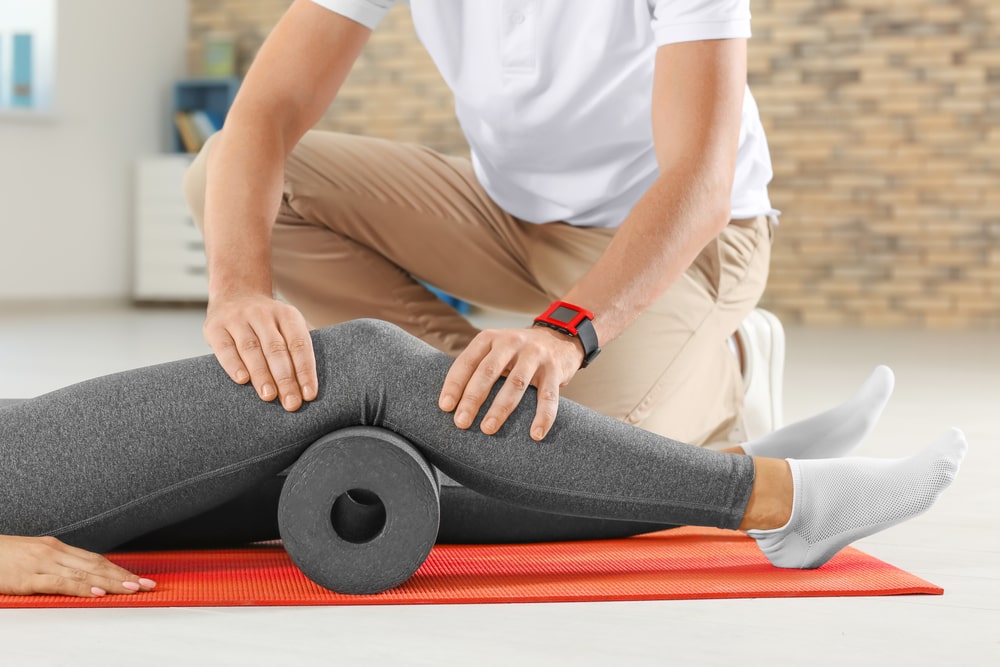Recreational sports and competitive athletics account for a significant number of injuries seen in a physiotherapy clinic. Rehabilitation of your injury should start as early as possible. Following a sports-related injury, it is recommended to book an assessment for proper diagnosis, treatment plan options, and quick and safe return to sport. The ultimate goal of rehabilitation is to limit the extent of the injury, reduce or reverse the impairment and functional loss, and prevent, correct or eliminate altogether the impairment.
Sports injury clinics such as Panther Sports Medicine in Calgary, Alberta, commonly prescribe therapeutic exercises as part of a comprehensive treatment plan. In addition to specific exercise prescription, your individualized treatment plan can include education, manual therapy, dry needling or intramuscular stimulation (IMS), acupuncture, local therapeutic modalities, and bracing or taping. Physiotherapists can also make referrals to sports physicians and orthopaedic surgeons depending on the severity of your injury.
It is important to have your condition evaluated by a physiotherapist so they can determine the appropriate course of treatment.
What is Therapeutic Exercise?
Therapeutic exercises include impairment specific exercises intended to remediate or prevent impairments, enhance function, reduce risk of re-injury, optimize overall health, and enhance fitness and well-being. The optimal goal of a therapeutic exercises is the achievement of an optimal level of symptom-free movement during basic to complex physical activities.
Components of Rehabilitation for Successful Return to Sport
Your physiotherapist will be able to guide you through the following components regardless of the specifics of the injury:
- Pain management
- Increase in mobility, flexibility, strength, and function
- Return to sport
It is important to include all components for a successful rehabilitation program. Each phase of rehabilitation incorporates education, hands on treatment from your physiotherapist, and an individualized therapeutic exercise program.

Physiotherapy Clinic
When can Therapeutic Exercises be used?
Regardless of when your injury occurred a physiotherapist will include individual and impairment specific exercises into your rehabilitation. Therapeutic exercises are beneficial at every stage of healing. Exercises for the above components can include but are not limited to the following:
Pain management
- Gentle range of motion and flexibility exercises
Increase function
- Flexibility and range of motion exercises
- Muscle strength and endurance exercises
- Neuromuscular control including proprioception and coordination exercises
- Functional exercises
Return to sport
- Sport specific exercises
- Reintegration into practices and ultimately game play
How can physiotherapy and therapeutic exercise help me?
Physiotherapists provide education for activity modifications and determine the proper conditions for healing. They provide hands on treatment combined with gradual return to sport exercises to minimize or prevent an injury from returning or keeping you out for the season. Physiotherapy is a safe approach to help athletes treat pain and return to optimal performance levels post-injury. For more information on what the benefits of physiotherapy are and how a physiotherapist can assist with your return to sport, please see our Benefits of Physiotherapy at a Sports Injury Clinic blog post.
References
Frontera W.R. (2003). Rehabilitation of Sports Injuries: Scientific Basis. Vol X of
Encylopaedia of Sports Medicine. An IOC Medical Comittee Publication in
collaboration with the International Federation of Sports Medicine. Blackwell
Science Ltd.
Hall, C. M., & Brody, L. T. (2005). Therapeutic exercise: Moving toward function. Philadelphia:
Lippincott Williams & Wilkins.
Kisner, C., & Colby, L. A. (2007). Therapeutic exercise: Foundations and techniques (5th ed.).
Philadelphia: F.A. Davis.





